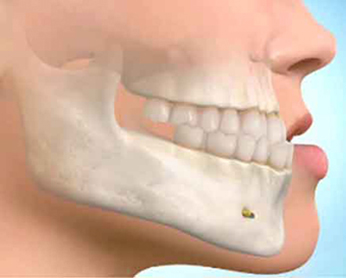Maloclusión clase III tratada con retropropulsor-estimulador 2
Palabras clave:
Maloclusión, Ortodoncia correctiva, Aparatos ortodóncicos funcionales.Resumen
Introducción: la maloclusión clase III es una alteración compleja, que presenta alteraciones en los tres planos del espacio, resultando en varias expresiones craneofaciales con un amplio rango de alteraciones dentales y esqueléticas. Todo esto hace que sea considerada uno de los problemas de ortodoncia más complejos y difíciles de diagnosticar y tratar.
Caso clínico: se presenta el caso clínico de una paciente de 12 años de edad, raza negra, con antecedentes de salud que acude a la consulta de Ortodoncia de la Clínica Estomatológica “Ormani Arenado LLonch” por presentar oclusión invertida anterior en cuya anamnesis no se recogen antecedentes de herencia, mantuvo hábito de biberón hasta los 9 años y actualmente presenta empuje lingual, mordida cruzada anterior de 2 mm, relación molar de mesioclusión, una mala relación de sus bases óseas con un cierre bilabial invertido. Se optó por una modalidad terapéutica que incluyó un diagnóstico clínico y cefalométrico con el posterior tratamiento ortodóncico, apoyándonos en el aparato funcional retropropulsor - estimulador 2 para la corrección de las anomalías de la oclusión.
Conclusiones: se presentó un caso clínico de maloclusión clase III a inicios de la dentición permanente y con la aparatología empleada se logró un resalte funcional, así como el restablecimiento de la estética.
Descargas
Citas
1. Tokunaga S, Katagiri K. M, Elorza P.T.H. Prevalencia de las maloclusiones en el Departamento de Ortodoncia de la División de Estudios de Postgrado e Investigación de la Facultad de Odontología de la Universidad Nacional Autónoma de México. Revista Odontológica Mexicana. [Internet]. 2014 [Citado 2015 dic 16]; 18(3): [Aprox. 14 p.]. Disponible en: http://www.sciencedirect.com/science/article/pii/S1870199X14720683
2. Avalos González GM, Paz Cristóbal AN. Maloclusión Clase III. Revisión Bibliográfica. Revista Tamé. [Internet]. 2014 [Citado 2016 feb 10]; 3(8) [Aprox. 4 p]. Disponible en: http://www.google.com/url?sa=t&rct=j&q=&esrc=s&source=web&cd=1&cad=rja&uact=8&ved=0ahUKEwilvaf4ia_MAhXMWz4KHdxJD-0QFggfMAA&url=http%3A%2F%2Fwww.uan.edu.mx%2Fd%2Fa%2Fpublicaciones%2Frevista_tame%2Fnumero_8%2FTam148-7.pdf&usg=AFQjCNHj8kqt08jKTNUip8W3wL_9lR_tbg
3. Da Silva de Carballo LA. Evaluación de la maloclusión clase III según su morfología. Pacientes de ortodoncia interceptiva. Acta Odontológica Venezolana. [Internet]. 2011. [Citado 2015 dic 16]; 49(3): [Aprox. 18 p]. Disponible en: http://saber.ucv.ve/ojs/index.php/rev_aov/article/view/9527/9323
4. Armas Gallegos LI, Batista González NM, Fernández Pérez E. Alternativas de tratamiento ortopédico funcional para el síndrome Clase III en edades tempranas. Congreso Internacional de Estomatología 2015. [Internet]. 2015. [Citado 2016 feb 20]; [Aprox. 10 p]. Disponible en: http://www.estomatologia2015.sld.cu/index.php/estomatologia/nov2015/paper/view/235/116
5. Alfonso Valdés H, Morejón Álvarez FC, García Díaz C, Corbo Rodríguez MT, Díaz Barrio H. El retropropulsor y estimulador de Buño: su uso en los prognatismos mandibulares, cambios cefalométricos. Rev Ciencias Médicas Pinar del Río. [Internet]. 2014 [Citado 2016 feb 10]; 18(3) [Aprox. 4 p]. Disponible en: http://scielo.sld.cu/scielo.php?script=sci_arttext&pid=S1561-31942014000300011
6. Goes Landázuri DR, Barnabé Raveli V, Dos Santos-Pinto A, Sampaio Dib LP, Savana Maia S. Changes on facial profile in the mixed dentition, from natural growth and induced by Balters' bionator appliance. Dental Press J. Orthod. [Internet]. 2013 [Citado 2016 Feb 20]; 18(2): [Aprox. 19 p.]. Disponible en: http://www.scielo.br/scielo.php?script=sci_arttext&pid=S2176-94512013000200022&lng=en
7. Marín Manso GM, Massón Barceló R, Cruz Rivas Y, Delgado Carrera L. Un aparato sencillo para el tratamiento funcional de la clase III. Rev Cubana Estomatol, [Internet]. 2005 [Citado 2015 dic 16]; 42(2): [Aprox. 18 p.]. Disponible en: http://scielo.sld.cu/scielo.php?pid=S0034-75072005000200003&script=sci_arttext
8. Fávaro Francisconi M, Castanha Henriques JF, Janson G, Salvatore de Freitas MS, Bittencourt Dutra dos Santos P. Stability of Class II treatment with the Bionator followed by fixed appliances. Appl Oral Sci. [Internet]. 2013 [Citado 2015 dic 16]; 21(6): [Aprox. 6 p.]. Disponible en: http://www.ncbi.nlm.nih.gov/pmc/articles/PMC3891279/
9. Quiroga Souki B, Costa Bastos BD, Ferro Araujo LF, Moyses Braga WF, García Pantuzo M, Loureiro Cheib P. Effective and Efficient Herbst Appliance Therapy for Skeletal Class II Malocclusion Patient with a Low Degree of Collaboration with the Orthodontic Treatment. [Internet]. 2015 [Citado 2015 dic 16]; [Aprox. 7 p.]. Disponible en: http://www.hindawi.com/journals/crid/2015/986597/
10. Martínez Asúnsolo P, Paredes Gallardo V, Llamas Carreras JM, Cibrián Ortiz de Anda R.M. Estudio comparativo de las maloclusiones de clase III tratadas con y sin cirugía. RODERIC. [Tesis en Internet]. España: Universidad de Valencia; © 2014 [Citado 2016 feb 10]; [Aprox. 5 p]. Disponible en: http://roderic.uv.es/bitstream/handle/10550/33722/TESIS%20DOCTORAL.pdf?sequence=1&isAllowed=y

Publicado
Cómo citar
Número
Sección
Licencia
Aquellos autores/as que tengan publicaciones con esta revista, aceptan los términos siguientes:- Los autores/as conservarán sus derechos de autor y garantizarán a la revista el derecho de primera publicación de su obra, el cuál estará simultáneamente sujeto a la Licencia de reconocimiento de Creative Commons que permite a terceros compartir la obra siempre que se indique su autor y su primera publicación esta revista.
- Los autores/as podrán adoptar otros acuerdos de licencia no exclusiva de distribución de la versión de la obra publicada (p. ej.: depositarla en un archivo telemático institucional o publicarla en un volumen monográfico) siempre que se indique la publicación inicial en esta revista.
- Se permite y recomienda a los autores/as difundir su obra a través de Internet (p. ej.: en archivos telemáticos institucionales o en su página web) antes y durante el proceso de envío, lo cual puede producir intercambios interesantes y aumentar las citas de la obra publicada. (Véase El efecto del acceso abierto).


